The Quest for Great Buns
Friday morning I mixed the Biga for Italian Sourdough, per David’s recipe (http://www.thefreshloaf.com/node/12485/sourdough-italian-bread-and-sandwich-rolls) The goal: perfect buns.
Friday afternoon, once the Biga had doubled, I massaged it with a dough scraper and decided it was too stiff and gummy/sticky to mix into the dough by hand. I have no stand mixer, but I staved off panic. I talked my little KA hand mixer into giving it a go. Following David’s instructions, I cut the Biga into the dry ingredients. This took several comical minutes with a kitchen shears and spatula (think Lucille Ball trying to divide a one pound wad of bubble gum). It might have worked better with a mini-chain saw (except for the Biga splotches on the ceiling). Once the Biga was cut up, the hand mixer worked pretty well, and after about 10 minutes with the mixer and 20 or so S&Fs, I had something fairly uniform.
After the primary fermentation with periodic S&Fs, the dough doubled on schedule, and I had a nice silky mound of bread-to-be, the nicest dough I’ve worked in all my (10) days of baking.
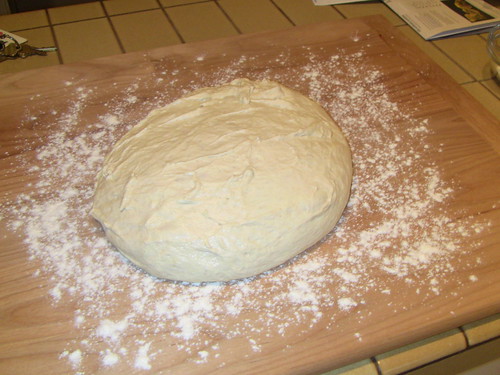
Making a split batch of rolls and a batard gave me a chance to try (and maybe even improve) my shaping skills. Of the 5 rolls, 3 are pretty much the shape I was going for. I should have re-shaped the other two, but I was tired and didn’t want to break every last bubble.

The loaves proofed faster than expected and they had to go into the oven before the stone had preheated enough. So I didn’t get great oven spring (see http://www.thefreshloaf.com/node/19452/my-model-great-oven-spring). Though they were fully baked, the bottoms are blond. I also forgot to rotate the loaves and my oven heat is apparently pretty uneven. That said, they looked pretty good on top, and the crumb is nice.
 ]
]
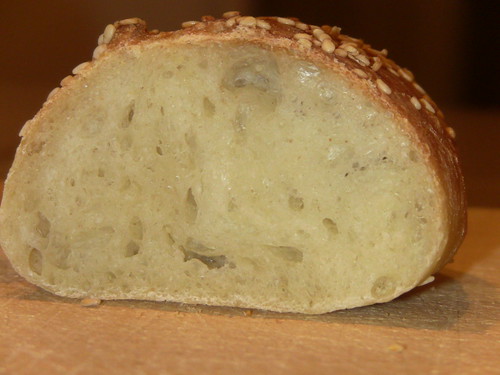 ]
]
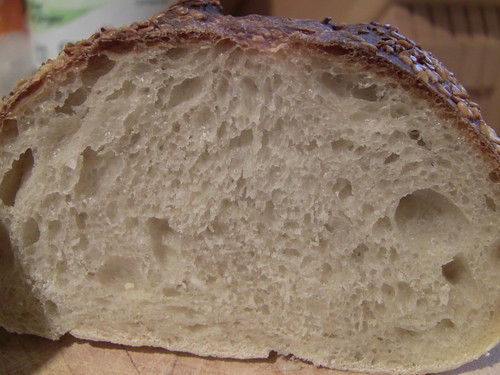 ]
]
The texture of both crust and crumb is pretty close to what I remember (and like) from David’s previous bakes of this bread, though not quite as airy. I am happy with the outcome, and happy to have learned the lessons—start pre-heating the oven before you think you need to, and don’t forget to rotate the loaves.
Because the Italian Sourdough got done start-to-finish on Friday, we were able to get to the Ferry Building Farmer’s Market Saturday morning. Made quite a haul of stone fruit, strawberries, corn and very photogenic vegetables.
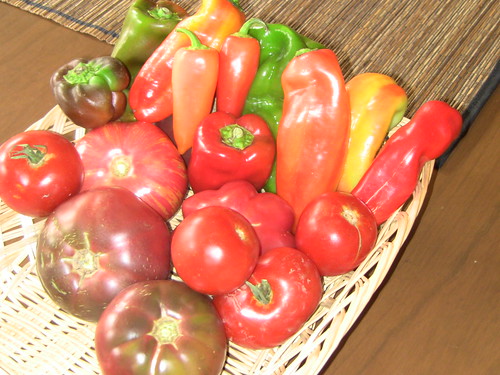
For dinner Saturday, the buns were excellent brushed with garlic-rosemary-infused EVOO and grilled for sandwiches of Teriyaki-marinated local King Salmon, heirloom tomatoes and lemon mayonnaise. I guess, with the Teriyaki and the Italian bread, we should call these “Orientalian Salmon Sandwiches”.
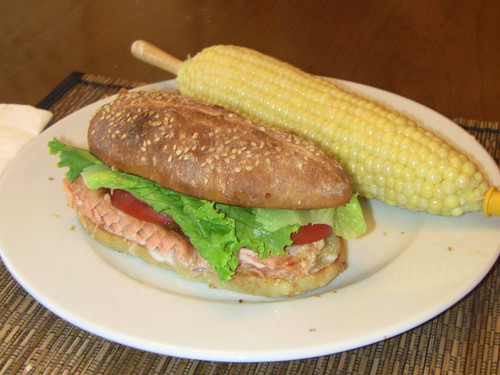
And the Batard made great toast Sunday morning, accompanying “Spanish” omelet.

The main Sunday event, of course, was the lamburgers that started my quest for great buns (hold the snickers). (See http://www.thefreshloaf.com/node/19399/iso-easy-great-and-recipe-hamburger-buns). Using an ancient Greek lamburger recipe I made up—ground lamb leg mixed a day ahead with minced onion, flat leaf parsley and garlic, and oregano, salt and pepper—I charcoal grilled the burgers and the buns (brushed with the same rosemary and garlic-infused EVOO) and layered with feta, heirloom tomatos and lettuce, with a dab of the lemon mayonnaise. They were even more delicious than they look.


The quest was worthwhile and the buns were excellent, but I think these are a bit dense for burger buns. Good thing lots of bun recipes came to light.
Other Weekend Bakes
In addition to the Italian Sourdough, on Saturday I mixed the dough for, and Sunday I baked, Susan’s Ultimate Sourdough for the third time…and with the best results yet. Even with less proofing and a very well pre-heated oven, I still didn’t get great oven spring.
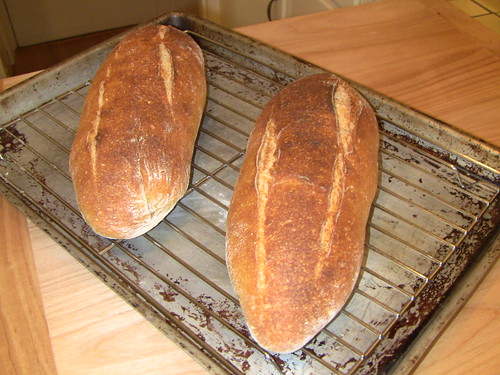

The Bread Professor (DMS) thinks maybe my oven vents too much, or I don’t have enough thermal mass to keep the steam going. He suggests lava rocks, but didn’t say what I should do with them [smileyface].
But I’m happy with the progress. The texture and flavor are delightful. My chief bread enthusiast loves the chewiness and the flavor.
And Saturday night I mixed up the liquid levain for Hamelman’s Vermont Sourdough; and I mixed the dough Sunday morning and baked two batards Sunday night. I made sure they were proofed right, and in addition to the usual cast iron skillet for steam, I spritzed them with water after about 10 minutes.
My shaping skills have improved some (I keep watching Floyd’s great batard-shaping video). And I got better, if not really good, oven spring.
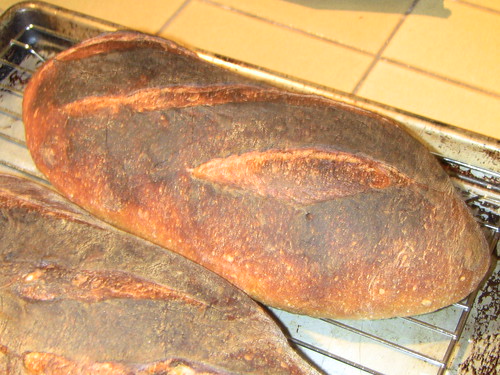
Still, not a real open crumb. But mighty tasty.
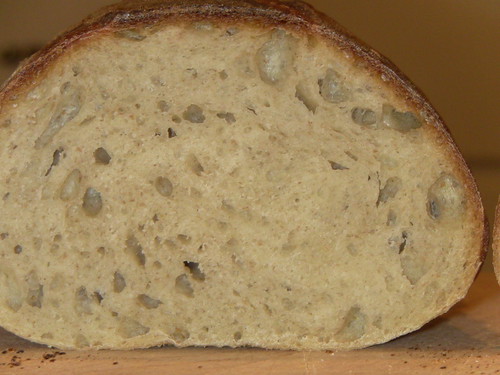
To top the weekend, this morning we had the famous Salmon Hash with a toast medley.

Since the learning experience for a novice baker is enjoyable in itself, the (mostly) good bread is just a bonus. I had the chance in one weekend to try three different sourdoughs, one with a Biga and one with a liquid levain, and different formulas, and different flavors. I got better at shaping batards, and at reading the dough’s signals. I do need to figure out how to get better oven spring; I’d love to get a more open crumb.
Some time this week, I’ll have to make Sourdough Pizza dough, for a Greek Pizza with the leftover lamburger and Feta.
Thanks to TFL (especially David) for all the great tips, and the fun.
Glenn